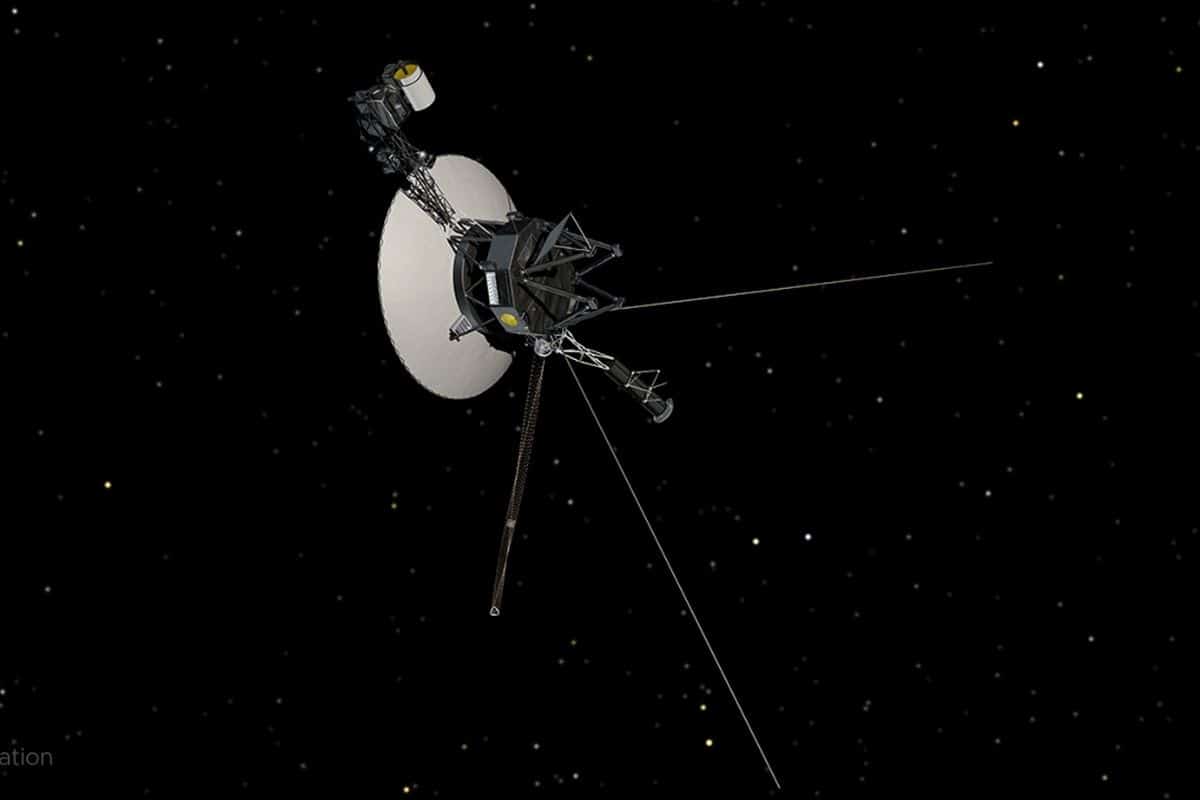

The probe, currently in interstellar space, is experiencing a technical glitch.
Voyager 1, along with his brother Voyager 2, has been racing through the universe for 45 years. It’s a special mission. Because both spacecraft explore environments where no human-built probe has ever been before. In fact, they have already invaded interstellar space. Still, Voyager 1 starts to show some flaws after all this time. Because the probe sends data back to Earth that the mission team can’t make sense of.
Voyager 2 space probe was launched in 1977, a few weeks earlier than its brother Voyager 1. Both probes have been active for almost 45 years now. This makes them not only the longest operating space probes ever, they also break all records when it comes to the distance they have traveled to date. Especially now that it can be stated with certainty that both vessels have penetrated interstellar space. No spacecraft has made it this far to date. And they will continue for a while. Both probes are moving at an unimaginable speed of about 48,280 kilometers per hour, exploring new regions of the universe that we still have a lot to learn about.
The probe presents the American space agency with a big mystery. Because while Voyager 1 appears to be functioning properly, something is not quite right with the data it sends to Earth. The malfunction is probably in the attitude articulation and control system (AACS). This instrument controls the orientation of the 45-year-old spacecraft and ensures that Voyager 1’s powerful antenna is always pointed toward Earth, allowing it to send data home.
problem
Yet something strange is going on. It seems that the AACS still works; the spacecraft receives orders, executes them, and sends scientific data back to Earth. Voyager 1’s signal has not weakened either, suggesting that the AACS is still pointing toward Earth. But readouts from the telemetry data don’t match what Voyager 1 is actually doing. The mission team receives data that appears to have been randomly generated. In short, something is not right. Oddly enough, the failure has not yet caused the probe to go into safe mode; a state where all non-essential systems are shut down, giving engineers time to identify and fix a problem.
Mystery
The fact that Voyager 1 starts to show defects after 45 years does not surprise the mission team. “A mystery like this is part of this stage of the Voyager mission,” said team member Suzanne Dodd. “The spacecraft is nearly 45 years old, meaning the probe has been operating for much longer than mission planners had anticipated. We’re also in interstellar space—a highly irradiated environment that no spacecraft has ever been before. So there are some major challenges. But I think if there is a way to solve this problem with the AACS, our team will find it.”
Looking
The team plans to continue to monitor Voyager 1 closely. In doing so, they hope to determine whether the invalid data returned by the probe did indeed come directly from the AACS or whether another system involved in producing and transmitting telemetry data is at fault. If they manage to figure out the problem, a software update may be able to help.
Engineers will continue to work on the mystery Voyager 1 has presented to them for the foreseeable future. Meanwhile, scientists will continue to make the most of the data collected from the spacecraft’s unique vantage point. Voyager 1 is already 23.3 billion kilometers from Earth and is speeding through relatively empty space; Neither probe will come close to a star for the next 40,000 years. Voyager 2 is currently 19.5 billion kilometers away and seems to be able to continue its reconnaissance mission without any problems for the time being.
Source material:
†Engineers Investigating NASA’s Voyager 1 Telemetry Data” – NASA Jet Propulsion Laboratory
Image at the top of this article: NASA/JPL-Caltech